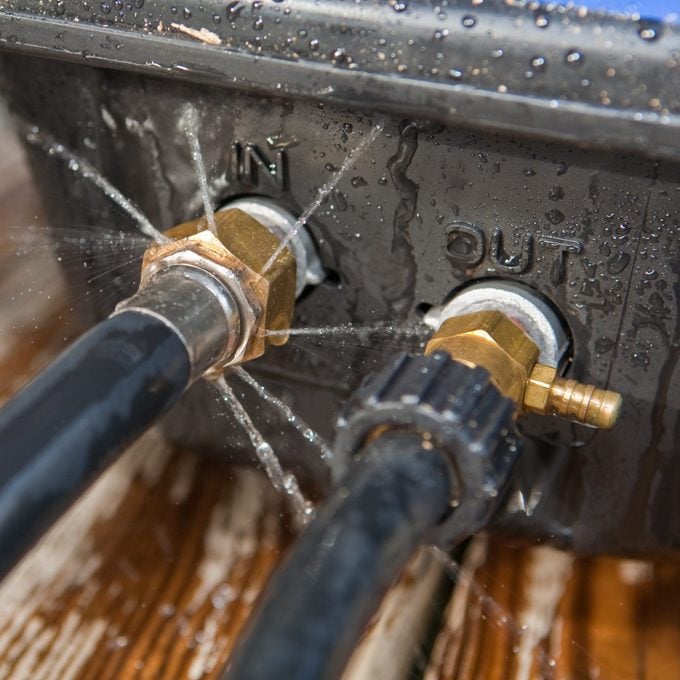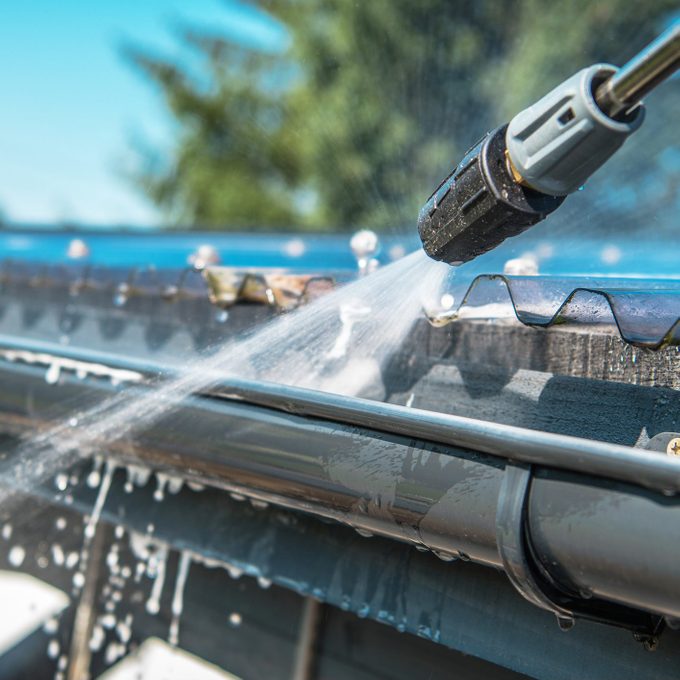Portable pressure washers are fantastic tools, as anyone who owns one will tell you. Used properly, a good pressure washer can drastically reduce the work and time involved in washing decks, cars, siding, farm equipment and more.
Gas-powered washers accomplish this with an internal combustion engine that powers a pump, creating highly pressurized water that shoots out of a handheld wand attached to the tool by a hose.
Like all machines, pressure washers sometimes break down. These malfunctions take several forms, but in general, they fall into two categories: engine issues and pump or wand issues. If you own a pressure washer or are thinking about purchasing one, keep reading to learn the most common ways these machines fail, and how to fix and maintain them.
Note: The engine-related problems below only apply to gas-powered pressure washers. All other issues apply to gas and electric.
Engine Won’t Run
If the engine won’t run after sitting for a long time and you know it’s sparking and has enough oil, there’s an excellent chance the carburetor is gummed up with old fuel. Try opening the carburetor drain plug and letting a little old fuel dribble out.
If it still won’t start after buttoning things back up, and you’ve checked oil, choke, etc., chances are you’ve got a partial blockage in a carburetor passages. Clearing it involves removing and disassembling the carburetor, then cleaning it with some carburetor cleaner. Don’t attempt this alone if you’re not confident taking apart and reassembling small, important parts.
Little Or No Water Pressure
If your pressure washer starts and runs fine, but there’s no pressure or no water coming from the pump, it could be a clogged wand, hose or inlet filter.
Begin isolating the problem by hooking a water hose to the washer’s inlet and turning it on. If water flows out the outlet, you know water is cycling through. If not, chances are your inlet filter is clogged. Remove and clean it, and you should be good to go.
Assuming water is flowing through the pump properly, start the engine, hook up the hose and wand and see if it works. If not, you have a collapsed or kinked hose or a clogged wand. Both problems can most likely be fixed quickly without professional help.
Water Leaking From Pump
Compressed air must be purged from the pressure washer pump before use. Pump the handle before running the engine until water flows from the wand. If this isn’t done, the unpurged air can damage check valves. On some pressure washers you can replace these individually; on others you need an entire pump replacement.
A defective thermal release valve can also cause leaks from the pump. This valve lets heated, pressurized water exit the pump if the washer is left running for too long without the trigger being squeezed. If the thermal release valve lets water leak constantly, it’s defective and needs replacement.
Water Leaking From Wand
The bottom end of the wand where it attaches to the hose is another common spot for leaks. Leaks there not only cause pressure to drop, they leave your arm and sleeve soaking wet, too.
Undo the screws holding the wand assembly together, making sure to place them somewhere safe. Carefully examine the inner workings of the assembly under a bright light. If you spot any cracks, you’ll need to replace the entire wand.
If not, check the state of all rubber O-rings within the wand assembly. If any of them have cracked or become brittle, that’s probably the cause of your leak. Replace them with identical rings (same size and thickness) as explained in your owner’s manual.
Strange Noises From Pump and No Water Flowing
If you fire up your pressure washer and it runs fine, but there’s no water flowing and you hear strange noises from the pump, you may have made a critical and common error last season.
In cold winter climates your pressure washer needs to be completely drained of water, and ideally filled with antifreeze, before winter storage. Forget to do this, and you’ll almost certainly leave water sitting in your machine’s pump. Come winter, that water will freeze, expand and critically damage the pump’s inner workings.
If this happens, your only option is buying a replacement pump. You can find a video online to guide you through the replacement installation, or call a professional.
Soap Not Dispensing From Reservoir
Some higher end pressure washers come with a built-in reservoir for special pressure washer liquid soap. The idea is that mixing soap with the pressurized water you’re spraying will help clean things better and faster. My own pressure washer has this feature, and I can attest that it makes a big difference when you’ve got lots of caked-on dirt to deal with.
Trouble is, often the soap doesn’t flow properly from the reservoir even when it’s filled to the top. Nine times out of 10, the reason is simple: Too much back pressure in the pump prevents the soap from being sucked into the nozzle.
Most pressure washers can’t draw the thick liquid soap up from the reservoir if you have any nozzle on the wand other than the weakest, least-pressurizing one that comes with your machine. No nozzle at all works even better. More aggressive nozzles reduce overall flow rate a lot, and your washer needs sufficient flow rate of water to draw up the soap.
So if you’ve got a soap-enabled pressure washer that won’t draw up the soap up properly, try removing the nozzle.
Article source here: Pressure Washer Troubleshooting and Repair




No comments:
Post a Comment